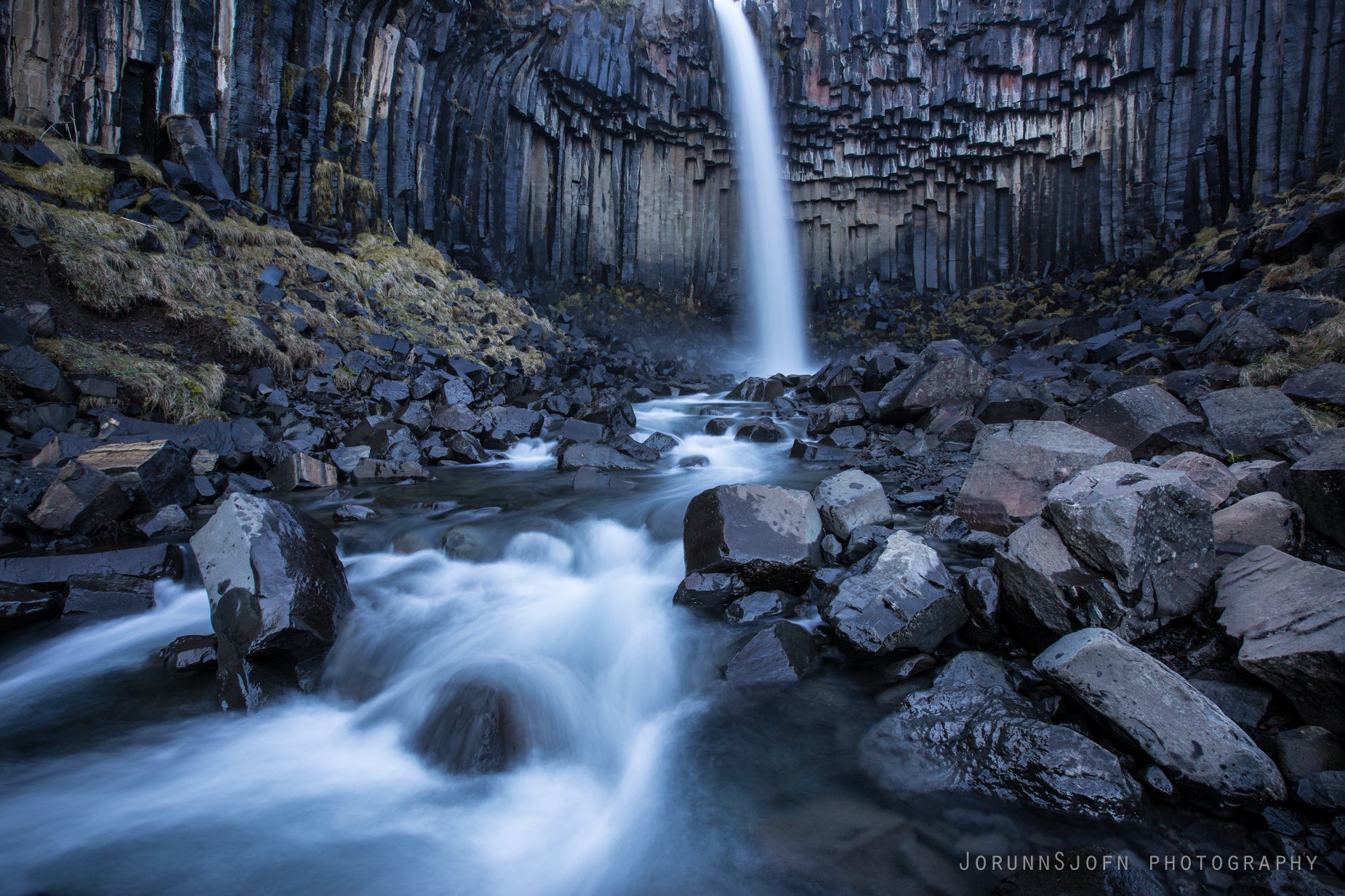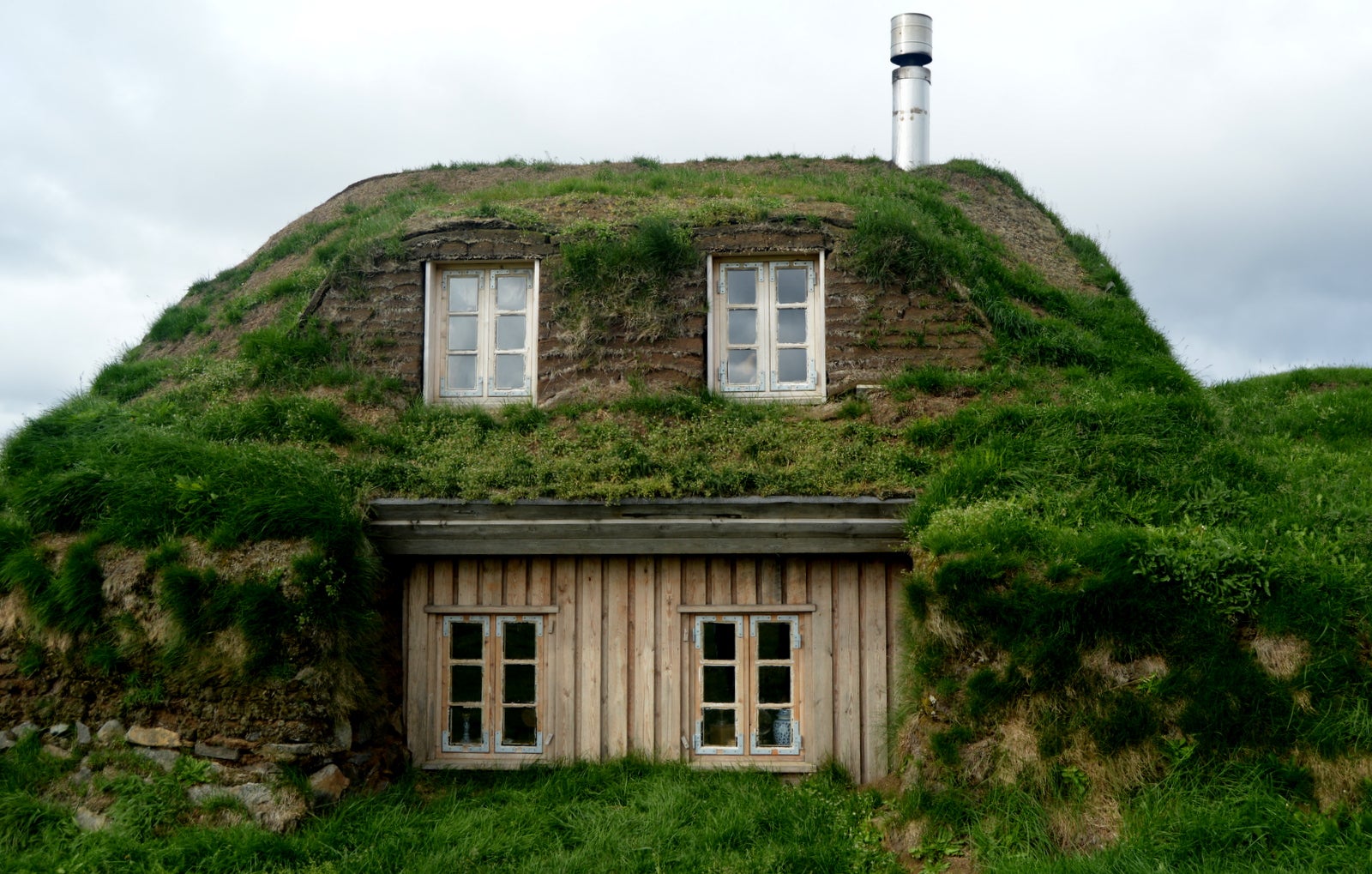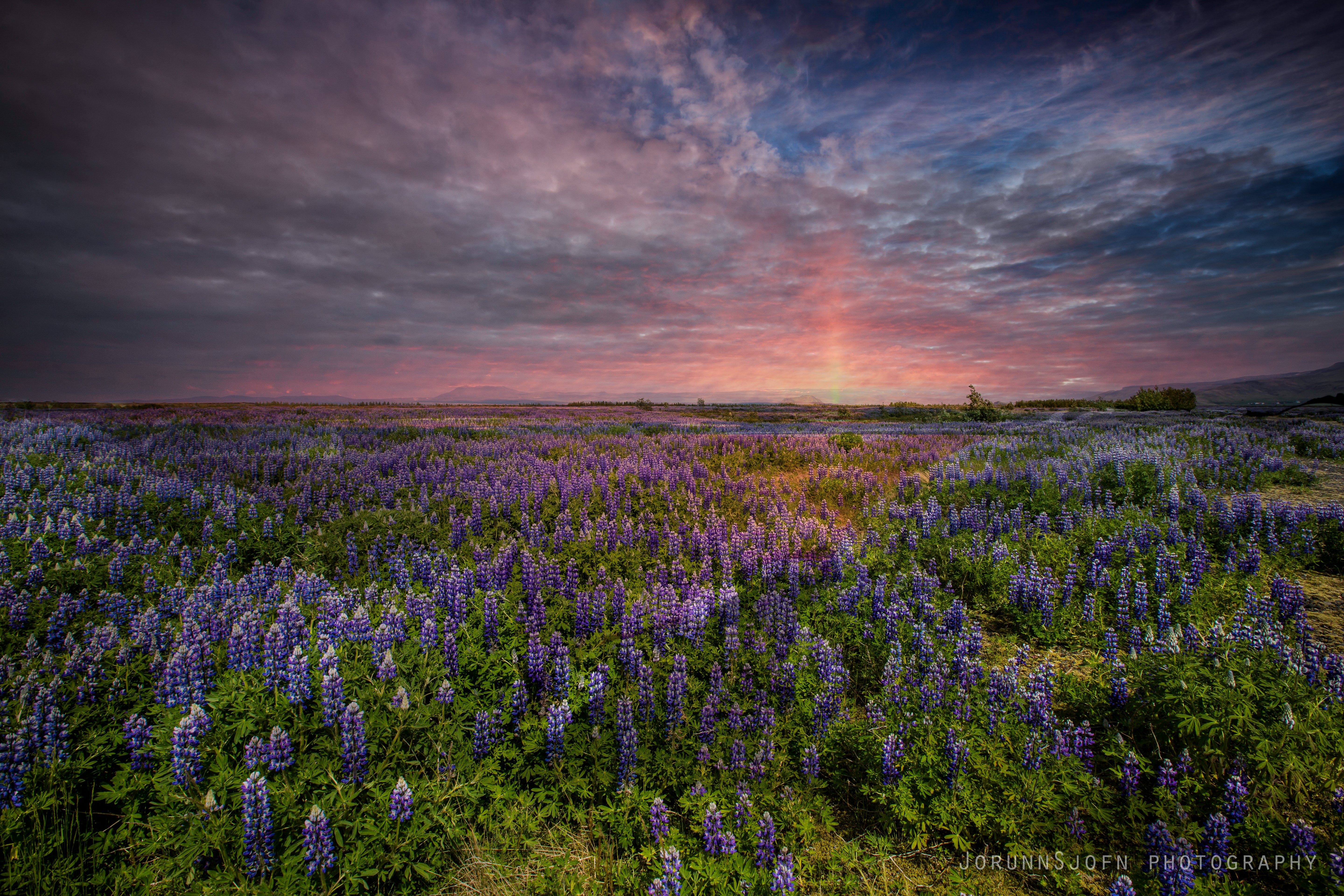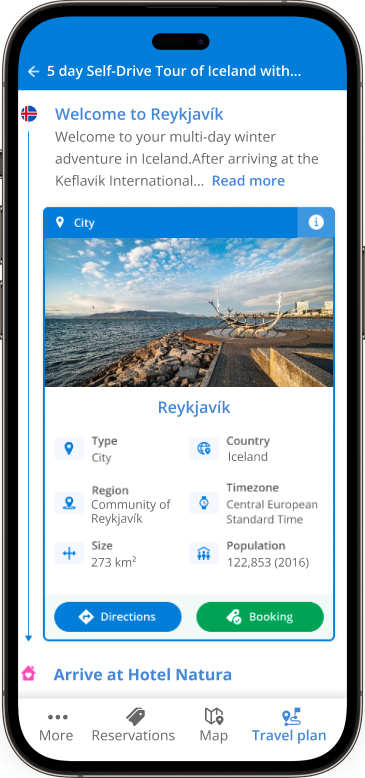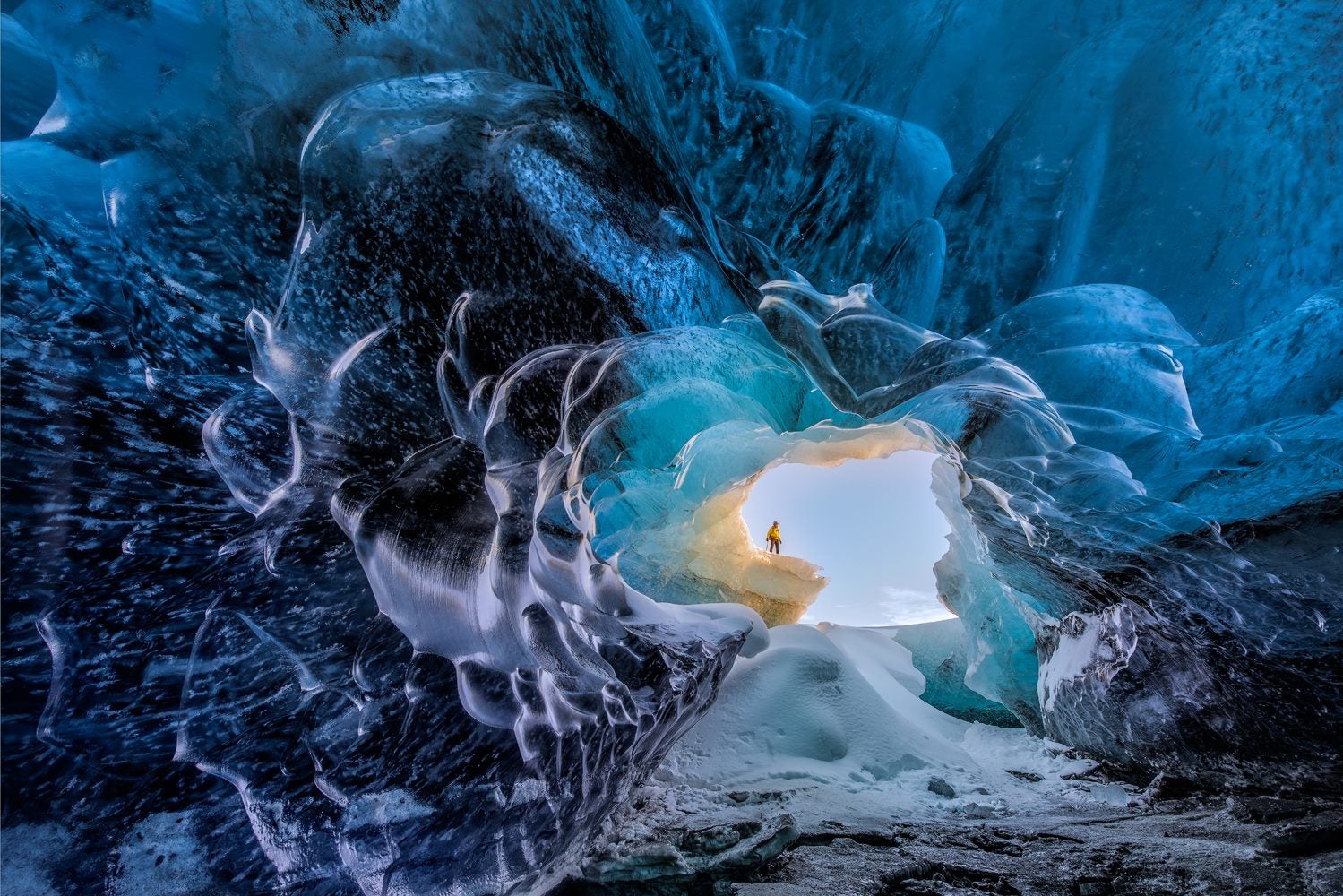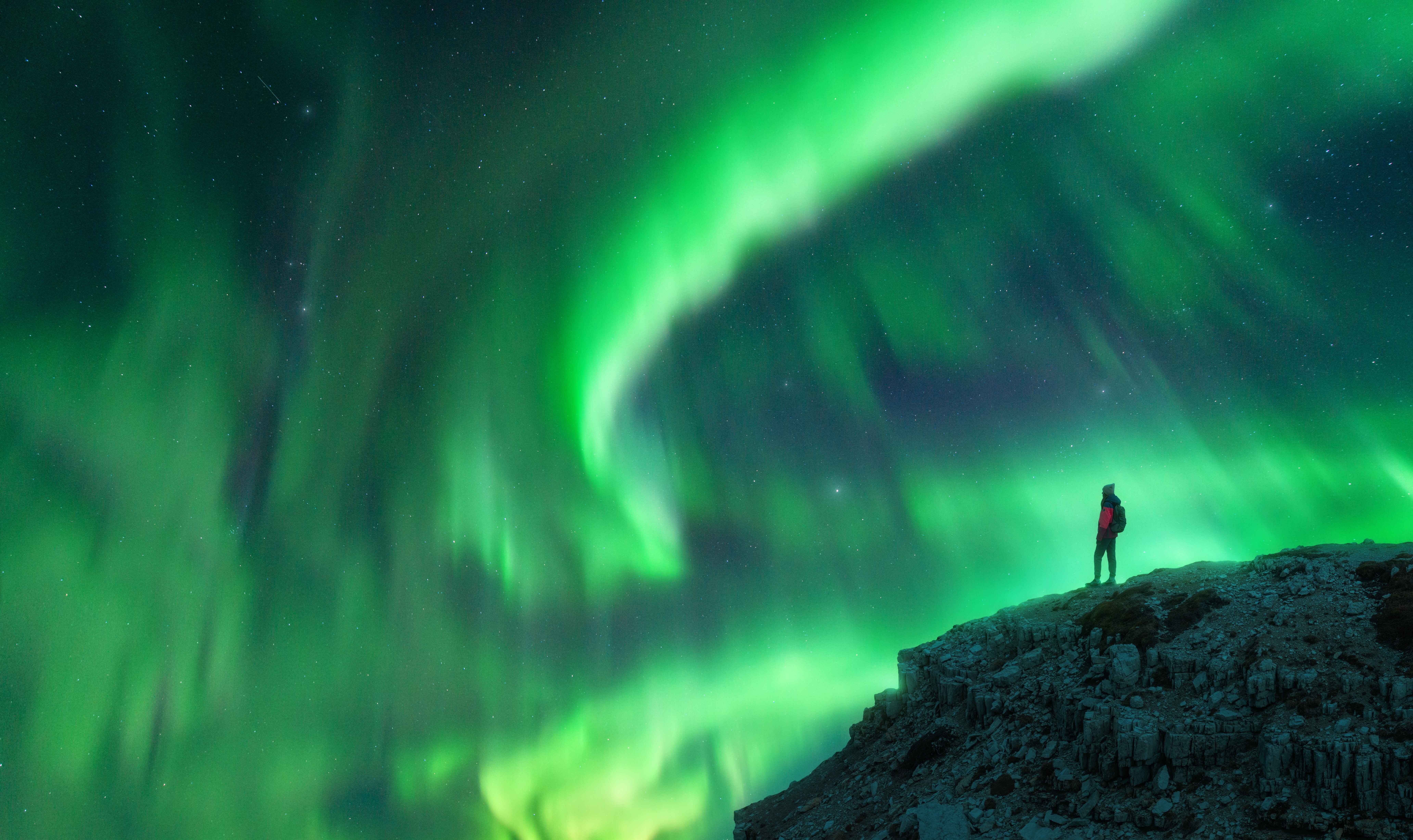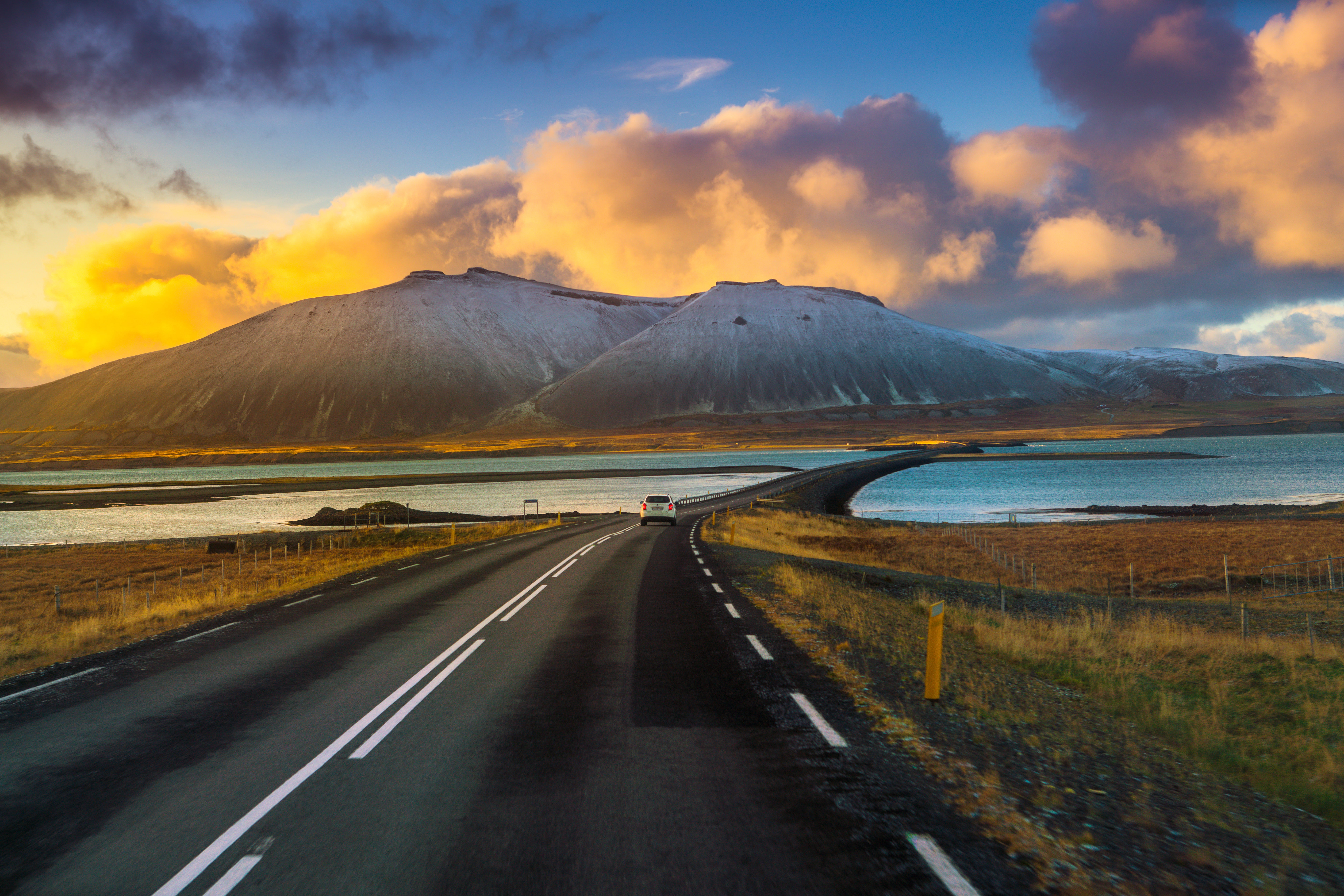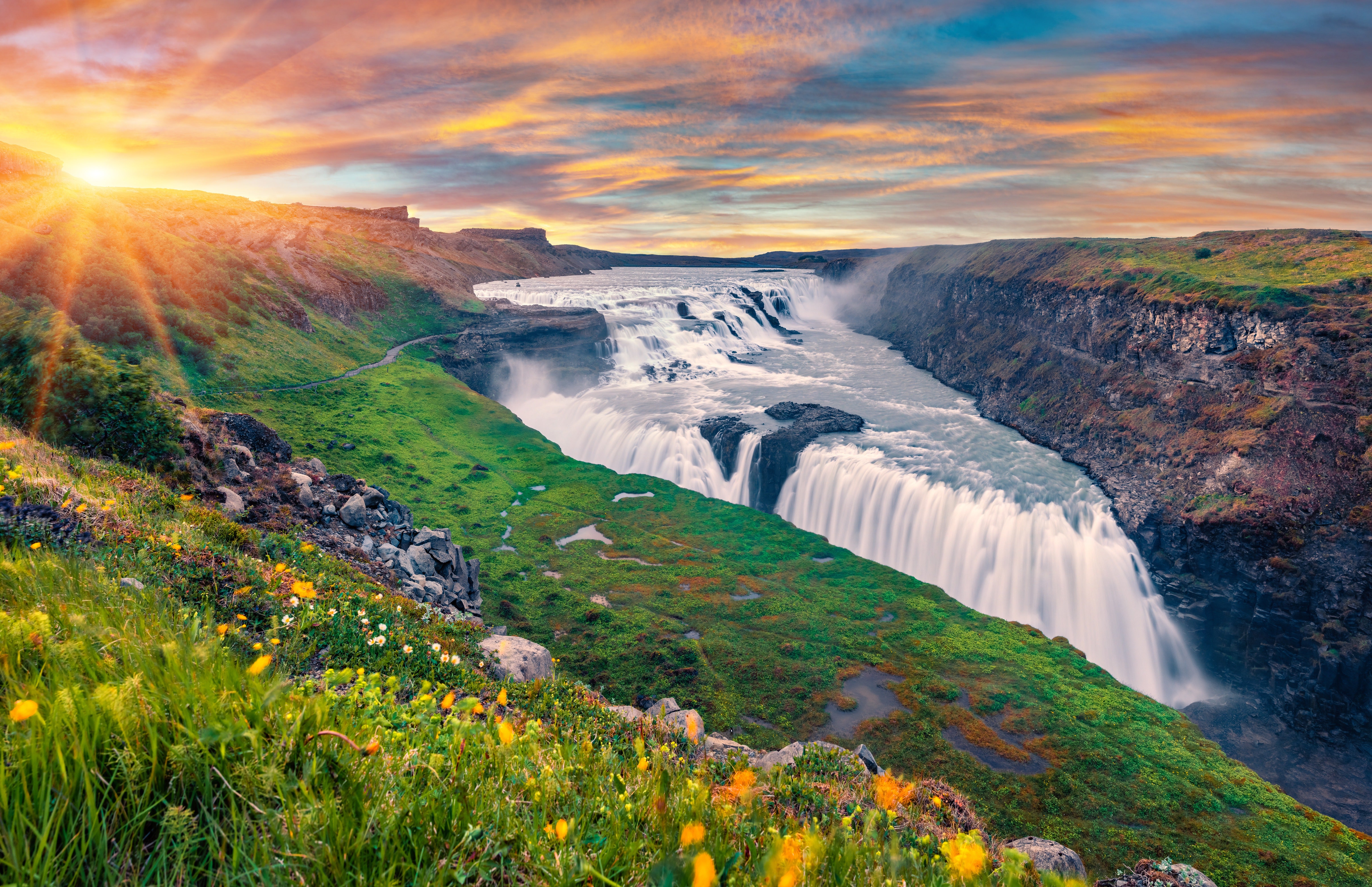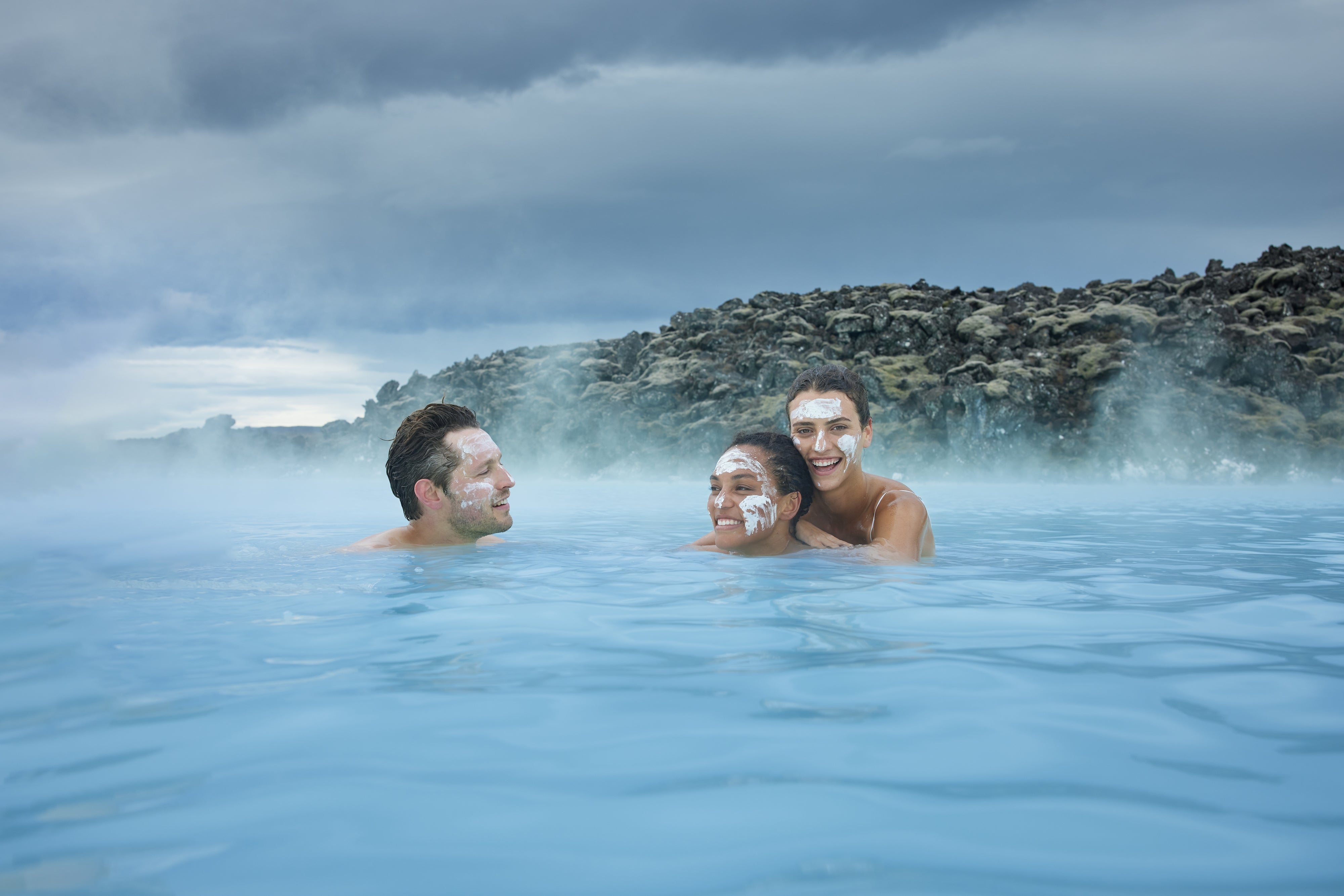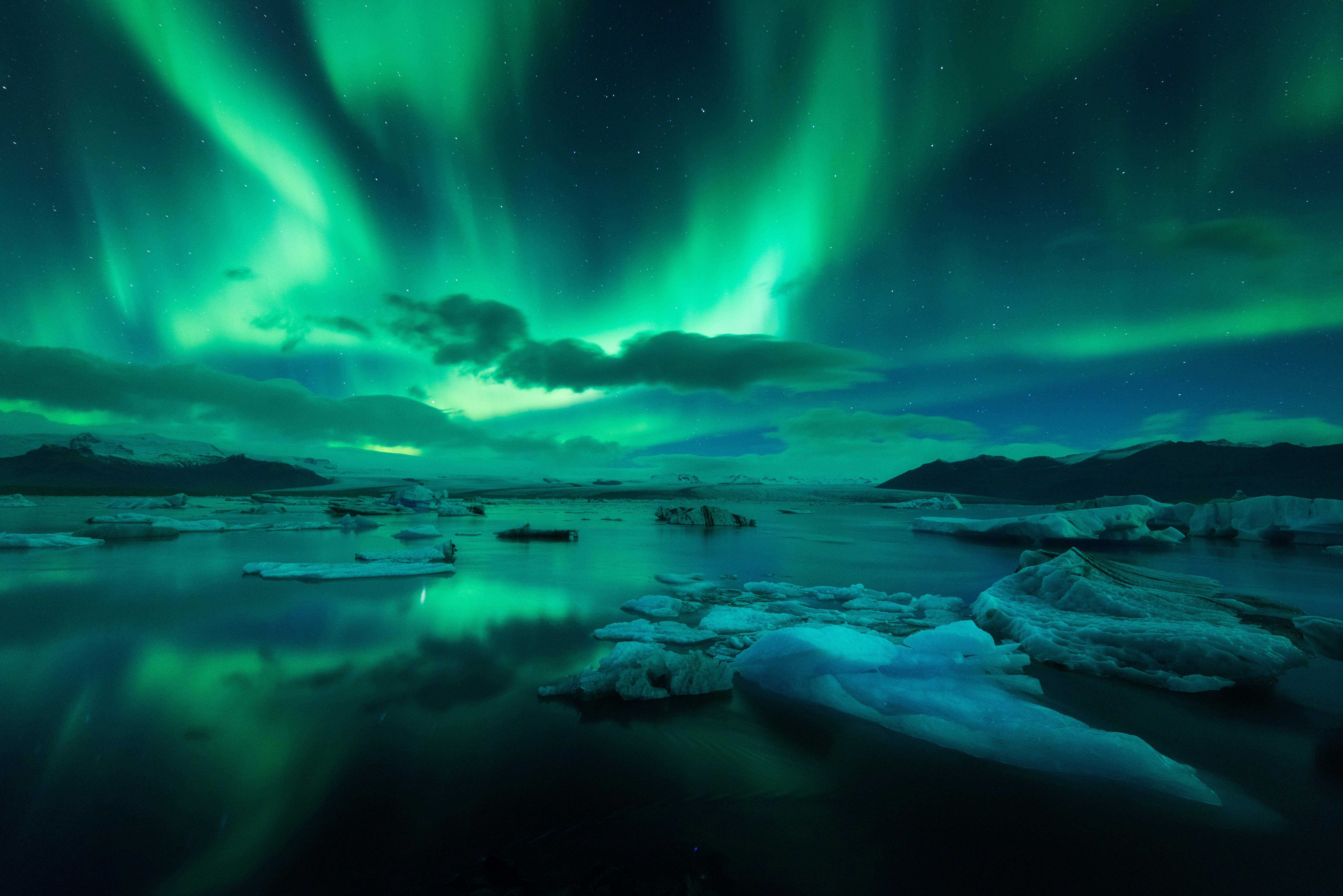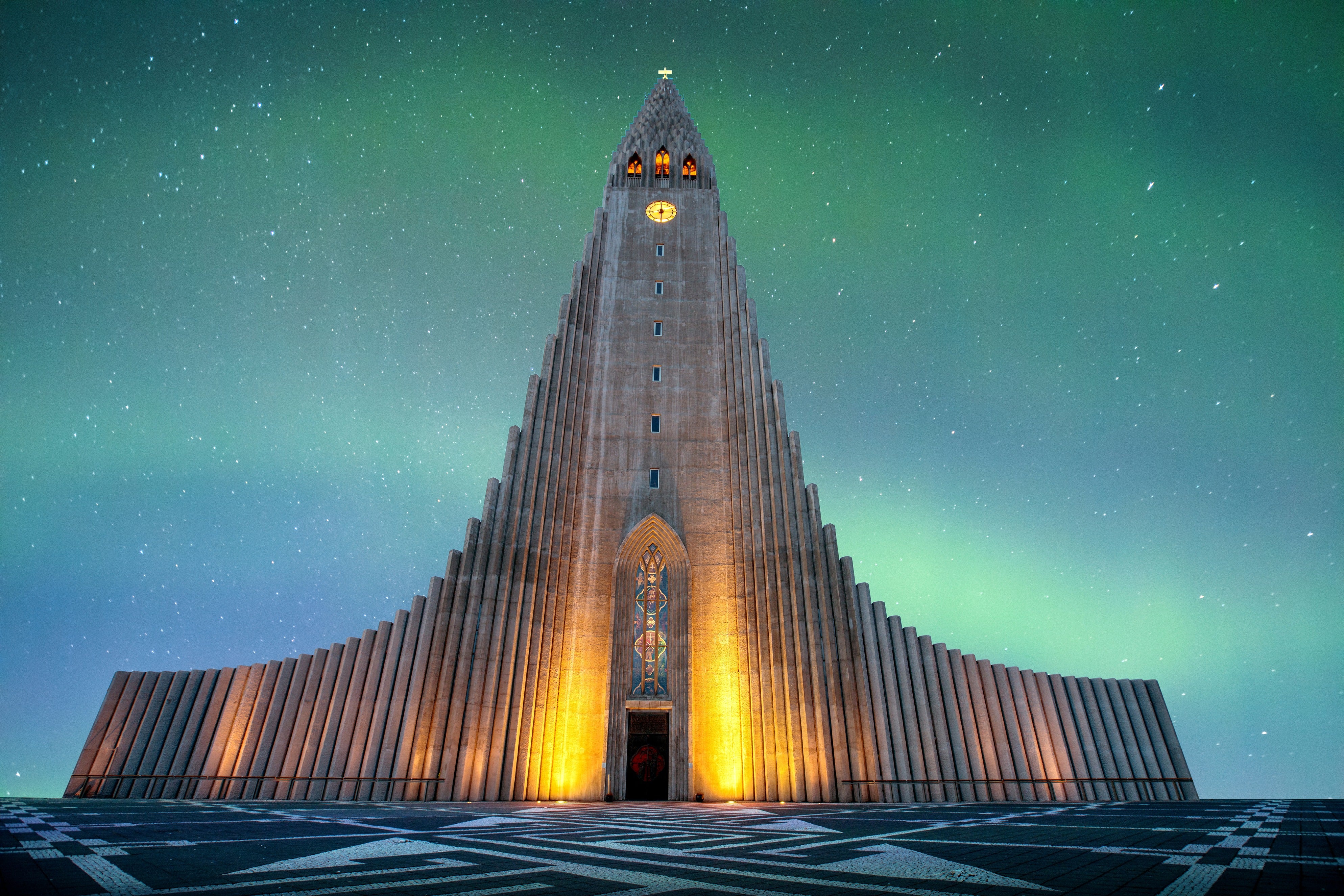
It is the first village you will encounter on the peninsula after driving 195 km from the capital city of Reykjavík.
This travel-blog is a side-blog of my 5-part travel-blog series about the interesting Snæfellsnes Peninsula.
Top photo: the entrance to the park
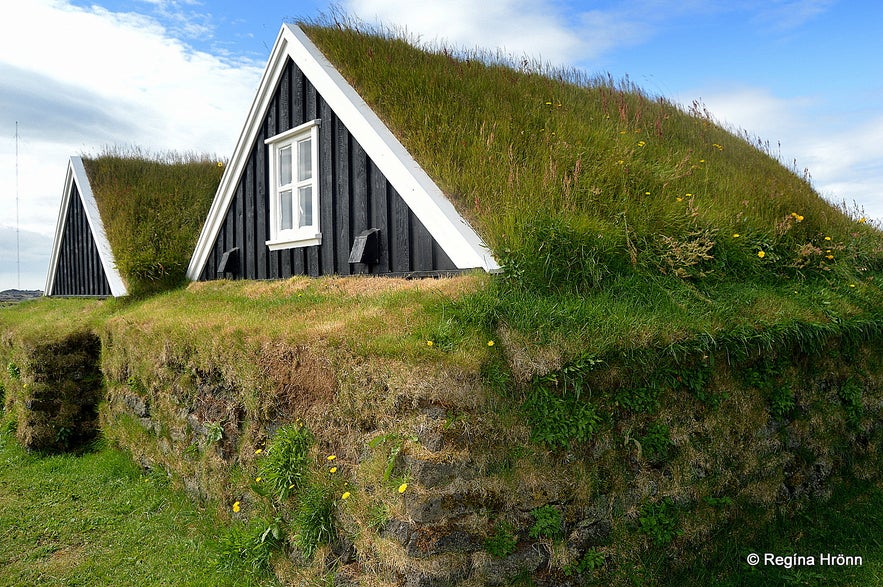
Þorvaldarbúð turf houses at the Fishermen's Garden
Hellissandur is one of the oldest fishing villages in Iceland. In the olden times, there was a big, vibrant fishing community here, with some 60 seasonal fishermen's huts back in the year 1700.
The population of Hellissandur and the small village next to it, Rif, is now approx. 544.
Almost every town and village in Iceland has a museum of its own. Hellissandur's museum is the lovely Fishermen's Garden and Maritime Museum, which you will see on your right-hand side as you enter the village.
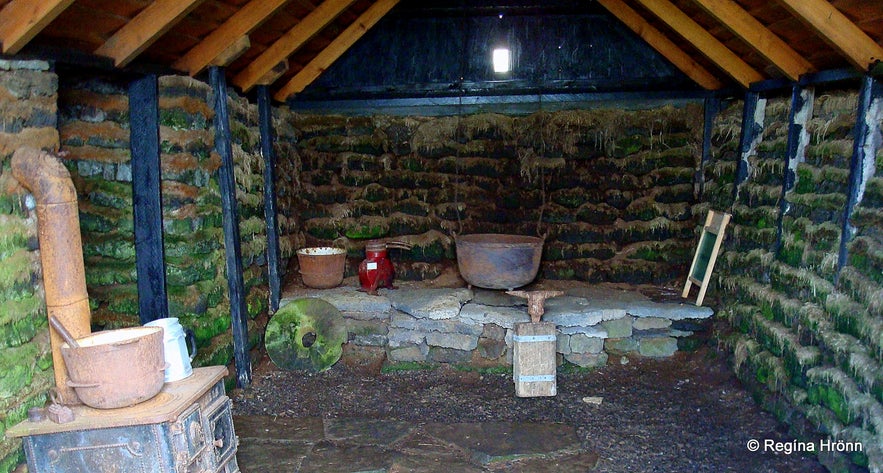
Inside the fishermen's hut
You will see a gate and the sign Sjómannagarður written in Icelandic, meaning the Fishermen's Garden or Fishermen's Park, and inside the park, you will find small turf houses.
Those of you, who have read my travel-blog, know that I adore turf houses and have written travel-blogs about almost all the remaining turf houses in Iceland :)
This replica of an old turf house Þorvaldarbúð, was rebuilt in 1973-1974. It originally stood in Brekknavör and was the last lived in turf house of its sort.
Have a look inside during the opening hours for a peek into the living conditions of the fishermen in the olden times.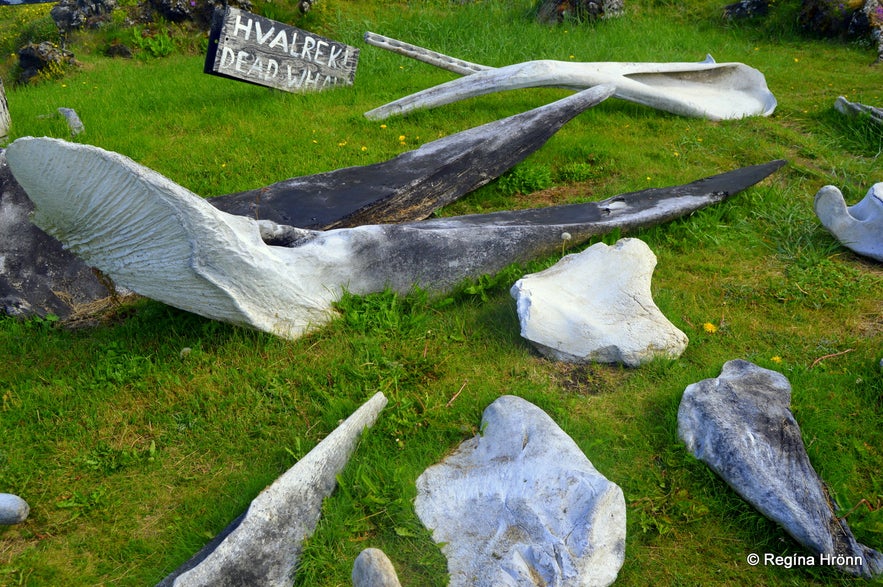
Whalebones in the garden from a dead whale found on the beach
The Fishermen's Garden was established by local fishermen in 1977-78 and depicts the way fishermen lived and worked.
There is both a Maritime Museum and a Fishermen's Park, and you can roam around the outside area free of charge, while there is an entrance fee to the Maritime Museum.
In the Fishermen's Garden, you will find huge whale bones and tools and instruments used by the fishermen in the olden times. The whale bones belonged to a whale that once washed ashore here.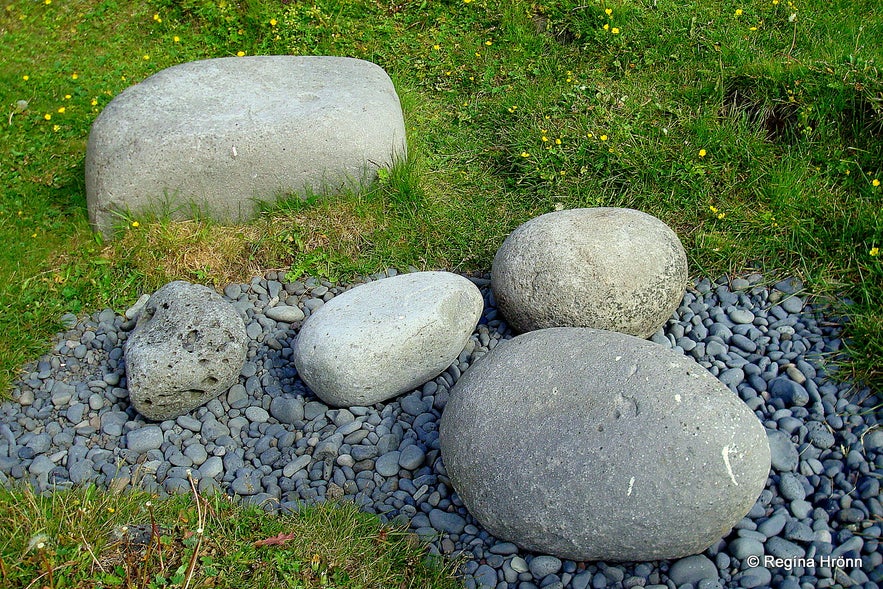
Steintök - the Lifting Stones
You will also find Steintök - the Lifting stones, which were used to measure the strength of the local men to see if they were strong enough to work at sea.
These 4 lifting stones weigh from 23 kilos to 154 kilos!
I showed you such stones in my travel-blogs, the Magical Snæfellsnes peninsula - part II and Djúpalónssandur & Dritvík.
As in all towns and villages in Iceland, which are located by the sea, there is a beautiful statue in remembrance of the many fishermen who lost their lives at sea.
I always look for such a monument in every village I visit when I travel around my country.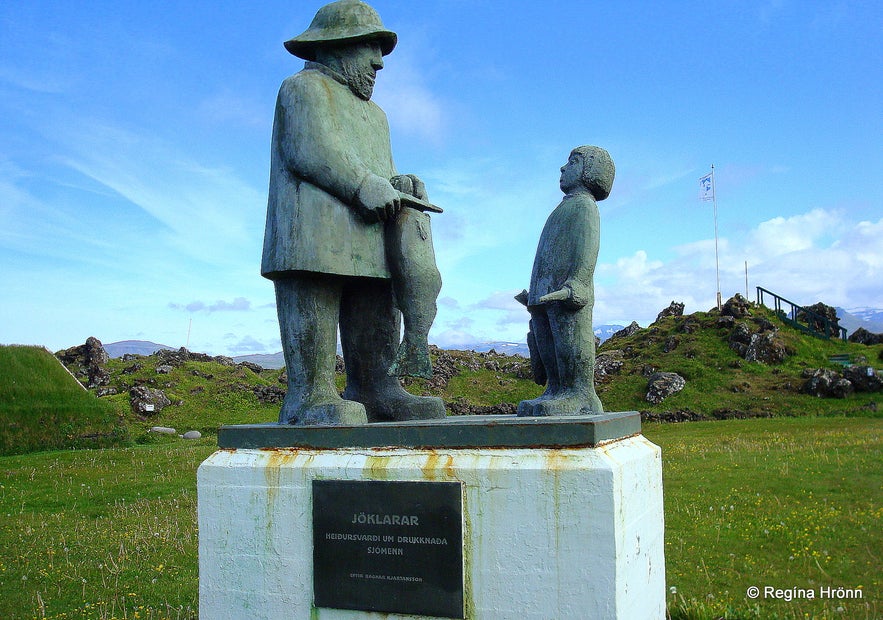
Jöklarar by the artist Ragnar Kjartansson before it got bronzed (photo from 2008)
And of course, the Fishermen's Garden is a fitting location for such a monument.
This plot was given to local fishermen for their annual celebration, and the first thing that was added to the plot was this lovely statue.
The monument is called Jöklarar or the Glacier people by the artist Ragnar Kjartansson, the same artist who created the statue of Bárður Snæfellsás at Arnarstapi.
It was unveiled in 1974. In 2018-2019 the artwork, which was getting damaged, got a makeover; it was sent to Germany where it was put in bronze.
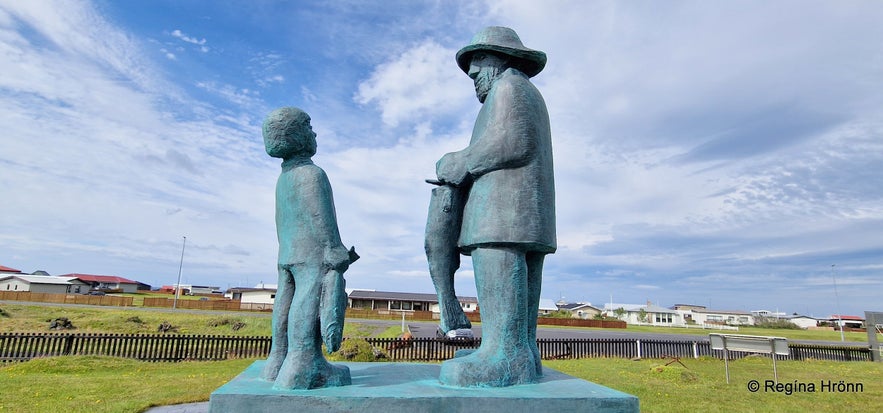 Visiting Hellissandur in 2024
Visiting Hellissandur in 2024
The lifesaving association department Helga Bárðardóttir (remember Bárður Snæfellsás daughter?) owns the statue, which is one of Ragnar Kjartansson's oldest artworks.
They contacted me and asked if they could use my photo from 2008 to show the damage to the statue. The statue was sent to Germany where it was put in bronze, and looks much better now.
I am glad that the artwork of Ragnar Kjartansson is being looked after. I will add another travel-blog about his artwork in Iceland.
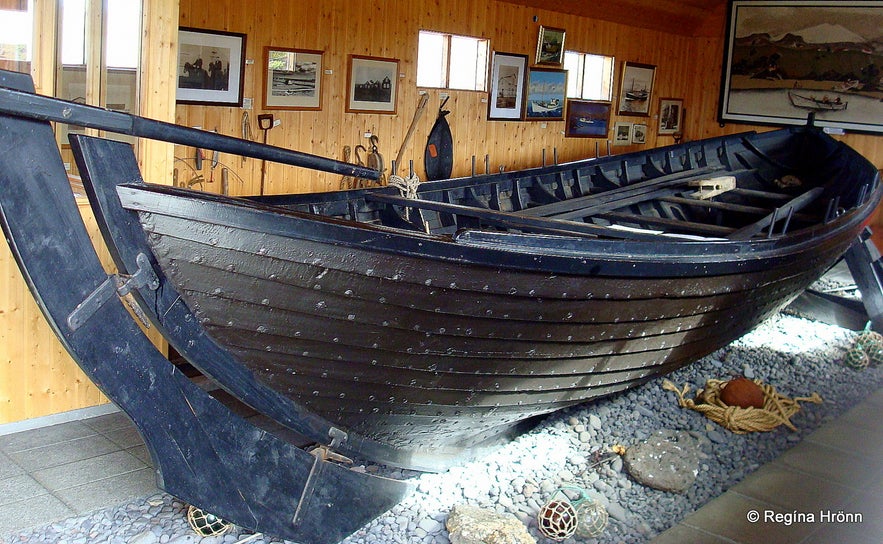
An old fishing boat at the museum
Inside the Maritime Museum, you will find an eight-oar rowing boat, Bliki, the oldest preserved fishing boat in Iceland, dating back to 1826.
It was used by the local fishermen until 1965, but these boats remained the same from the earliest times and into the last century.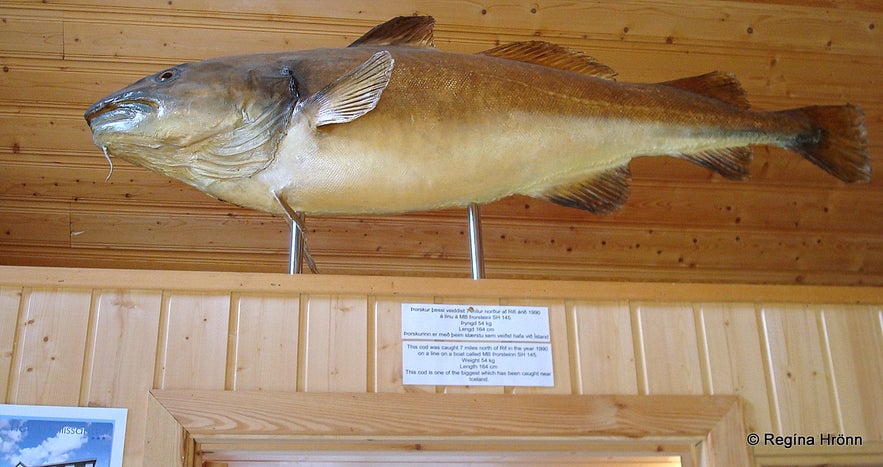
A huge cod mounted on the wall
What caught my attention though was one of the biggest cods caught by Iceland - 54 kilos and 164 cm long! It was caught in 1990, 7 miles north of the village Rif on a line on the boat MB Þorsteinn SH 145.
They also run a café, where you can f.ex. get coffee and waffles.
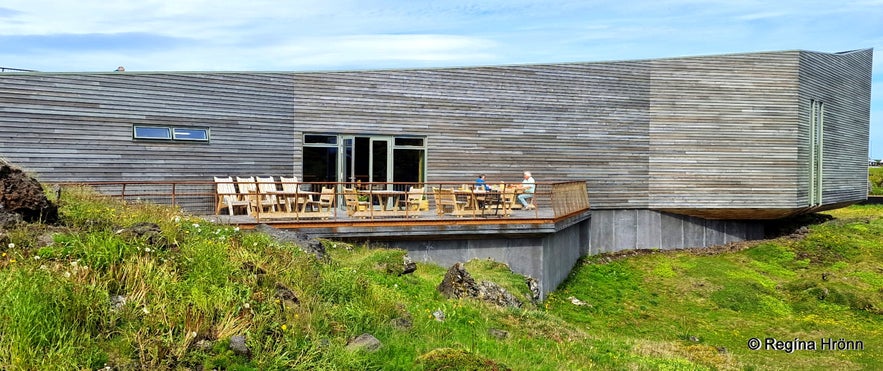 The new National Park Center in Hellissandur.
The new National Park Center in Hellissandur.
And now a new National Park Center is open in Hellissandur, immediately next to the Fishermen's Garden.
It is very cool and the view from the café is one of the most beautiful in Iceland.
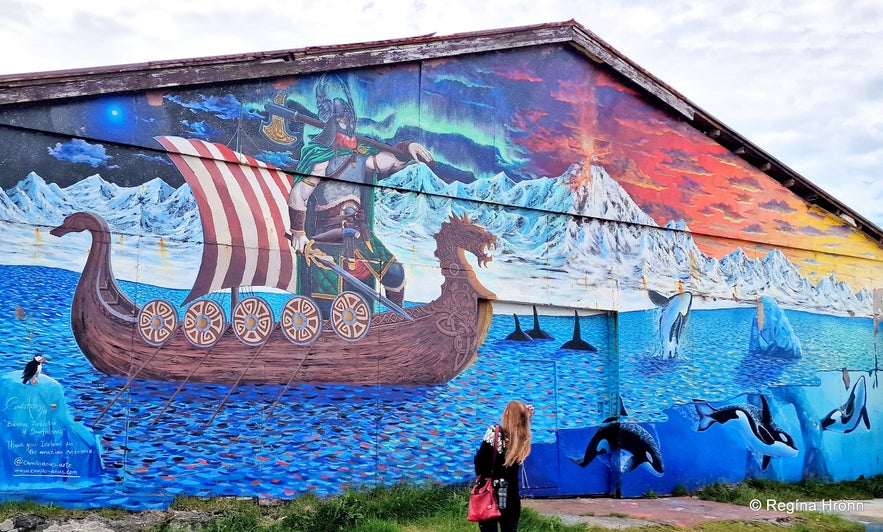 Beautiful murals on the old freezing plant in Hellissandur
Beautiful murals on the old freezing plant in Hellissandur
Don't forget to have a look at the beautiful murals in Hellissandur village on the old freezing plant.
Kári Viðarsson got the idea of creating an outside art gallery at Hellissandur and got 10 artists from around the world and ended up with more than 30 beautiful murals in Hellissandur.
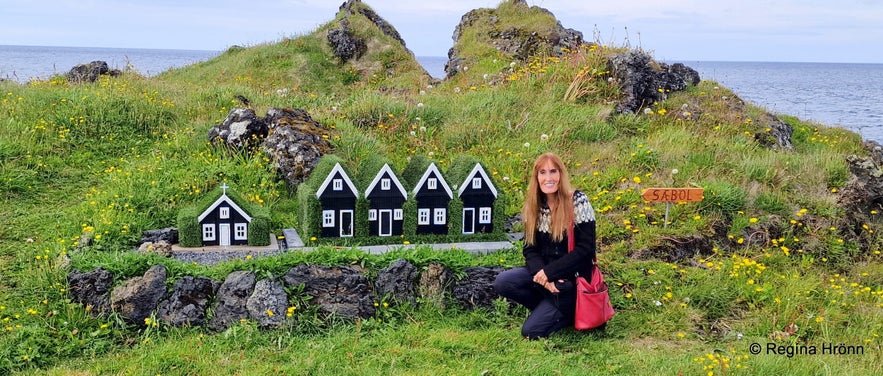 A beautiful replica of a turf house made by Ómar by the Love Street
A beautiful replica of a turf house made by Ómar by the Love Street
And it is a must to walk the Love Street by the sea while visiting Hellissandur.
Ómar Lúðvíksson created Love Street in Hellissandur by his house. It is so beautiful and well-made, kudos to him for a job well done.
We visited Ómar and he told us about many elf rocks in this area, so be on the lookout for them as well.
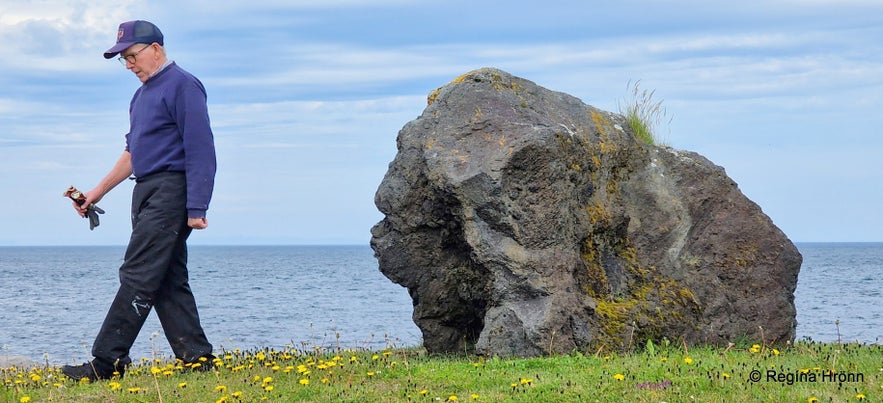 Ómar by one of the elf rocks in Hellissandur
Ómar by one of the elf rocks in Hellissandur
Hellissandur village and the Fishermen's Garden are located 195 km from Reykjavík, by Útnesvegur road number 574.
To reach this area it is best to rent a car in Reykjavík, and drive up to Snæfellsnes peninsula in a couple of hours. Here is a selection of car rentals in Iceland: the best car rentals in Iceland.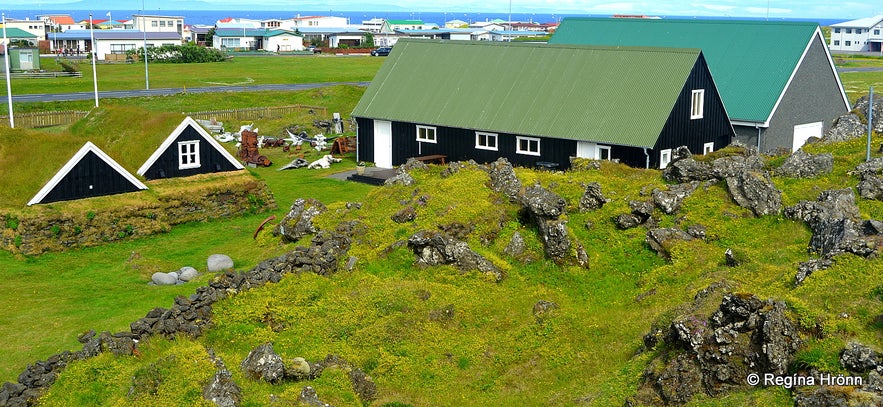
The Fishermen's Park
You can check out my travel-blog series about the Magical Snæfellsnes Peninsula. I have written an I-V part travel-blog series, where I show you what there is to see and do on the peninsula:
The Magical Snæfellsnes Peninsula - part I
The Magical Snæfellsnes Peninsula - part II
The Magical Snæfellsnes Peninsula - part III
The Magical Snæfellsnes Peninsula - part IV
The Magical Snæfellsnes Peninsula - part V
Here you can see the location of Hellissandur on the map.
Have a lovely time exploring the beautiful Snæfellsnes peninsula :)


